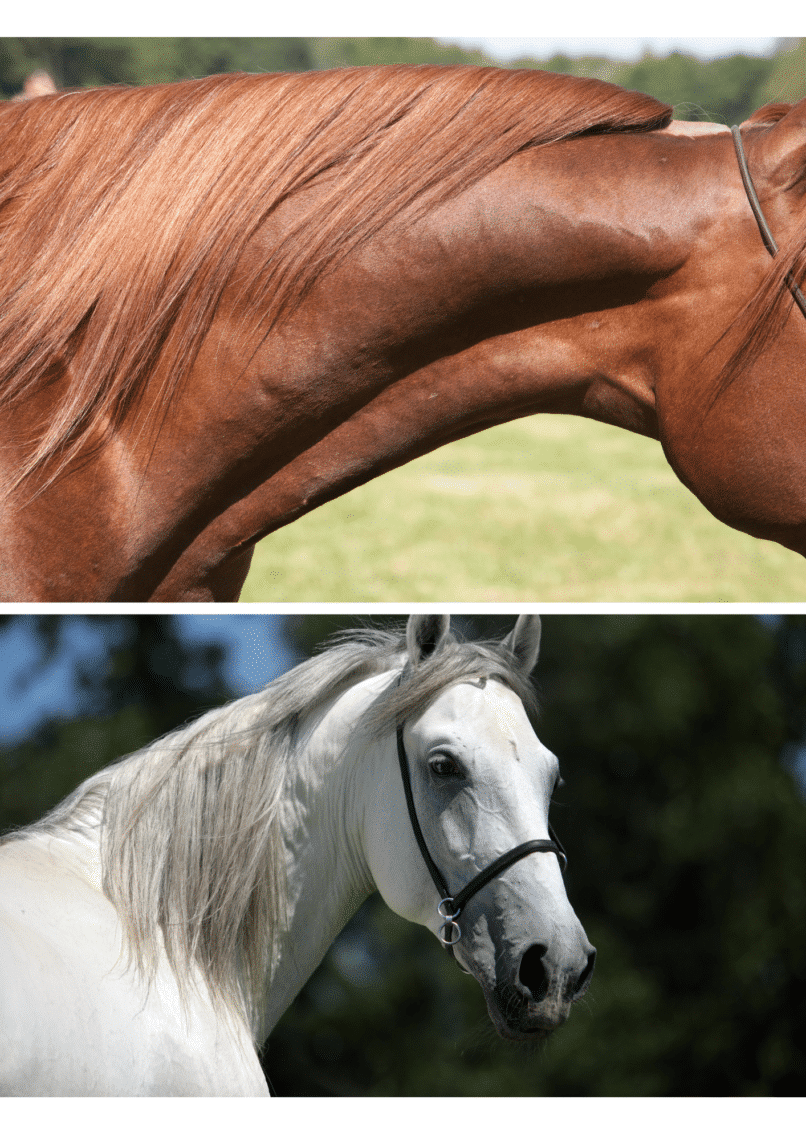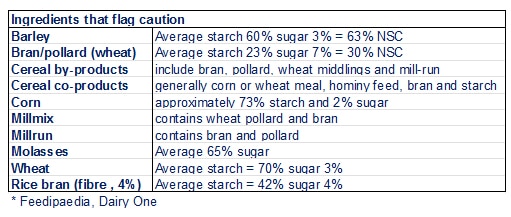A well-muscled top line is wonderful, an overabundance of fat along the top of the neck is not. DR JENNIFER STEWART explains why.
Horses, like humans, are not immune to the obesity epidemic. Horses that are genetically susceptible, the path to metabolic syndrome is paved by a diet high in sugar and starch coupled with insufficient exercise.
Metabolic syndrome is similar in horses and humans. Excess body fat and an inability to regulate blood sugar levels lead to insulin dysregulation (insulin resistance and reduced insulin sensitivity). The problem in horses isn’t too little insulin (as in human diabetes where daily insulin injections may be required), it’s that cells are not sensitive enough to insulin and levels may increase 100-fold in an attempt to move glucose out of the blood and into the body cells.

The combination of high levels of glucose and insulin is toxic to laminae and the number one cause of laminitis, with a recurrence rate of over 34 per cent. And, it’s not just ponies! Over 22 per cent of healthy Thoroughbreds, Quarter Horses, Warmbloods and mixed breeds are unable to regulate their blood glucose. Feeds high in carbohydrates (>12%) raise blood sugar and insulin levels and they stay high. These horses also have a lower threshold for non-structural carbohydrates (NSCs) and are 17 times more sensitive to carbs than other horses.
First line management includes weight reduction and preventing a rise in blood glucose by limiting exposure to carbohydrates. It’s really important to know the amount of carbs (ie sugar, labelled as ESC or WSC on feed bags) and starch for each feed you use. NSC is a combination of starch and sugar, and that’s what raises blood glucose and insulin to toxic levels. Carefully read those feedbag labels, brochures and information on feed company websites. If starch plus sugar and NSC are not listed, it’s usually because they are too high. Feeds containing cereal grains, oats, barley, corn or grain byproducts (bran, pollard, millrun etc) are generally not safe.

It’s also important to understand and read between the lines of brochures, as well as the labels on feed bags. If the label doesn’t list starch and sugar, or an NSC of less than 10 per cent, it’s probably not safe. Here are some terms often used on feed bags and what they mean:
Grain-Free: No official definition, generally means no whole grains but could still include grain byproducts such as bran, pollard, millrun etc which are high in NSC.
Hominy Meal: Ground corn meal: 38-45% NSC.
Low GI: The glycaemic index (GI) is determined by fasting the horse overnight then collecting blood before and 1, 2 and 3 hours after feeding to measure ACTH, glucose and insulin. If not done, the feed cannot be claimed to be low GI. Check with the manufacturer that the research has been done on their feed. For more information see the Journal of Veterinary Internal Medicine’s article on carbohydrate pellets.
Low Sugar: If the percentage starch or total NSC are not given, it could be unsafe.
Low Starch: If the percentage sugar or total NSC are not given, it could be unsafe.
Micronised: The feed is ‘cooked’ making it more digestible and dramatically increasing the availability of glucose, which can cause a profound increase in glucose and glycaemic response.
Extruded: Extruded feeds may also not be a good choice for horses with metabolic syndrome. Extrusion increases starch digestibility making it easily converted to glucose and absorbed. Easy keepers often gain too much weight on an extruded feed. Horses with metabolic issues may not be able to handle the starch and sugar content of extruded feeds.
Nutritional Analysis: Needs to list sugar, which may be listed as WSC or ESC, and starch or else total NSC of less than10% or it may be unsafe.
Cool Feeds: Cool feeds are described as formulated to avoid spikes of rapid energy – unless blood glucose levels have been measure, this term is misleading – contact the manufacturer.
Starch: Recommended feed analysis less than 10%.
Reducing obesity
Ability to control insulin levels is 80 per cent lower in obese horses. While the body condition score is unreliable, the neck crest is not! The cresty neck score rates neck fat on a scale of zero to five, with three or more a laminitis risk. Recognising a cresty neck and checking your horse’s insulin levels enable early detection of impending laminitis. A second line of treatment that increases glucose excretion may be prescribed by your vet. Ertugliflozin can be helpful in horses that don’t respond to diet and exercise changes or when these changes are not possible.
How good are you at assessing how fat your horse is? And studies from the Queensland University of Technology will help you to score your horse’s neck.
Dr Jennifer Stewart BVSc BSc PhD in an equine veterinarian, CEO of Jenquine and a consultant nutritionist in Equine Clinical Nutrition.
All content provided in this editorial is for general use and information only and does not constitute advice or a veterinary opinion. It is not intended as specific medical advice or opinion and should not be relied on in place of consultation with your equine veterinarian.
| What’s in the feed – what the words actually mean | |
| Grain-free | No official definition, generally means no whole grains but could still include grain byproducts such as bran, pollard, millrun etc which are high in NSC. |
| Hominy meal | Ground corn meal: 38-45% NSC. |
| Low GI | Glycaemic index (GI): determined by fasting the horse overnight then collecting blood before and 1, 2 and 3 hours after feeding to measure ACTH, glucose and insulin. If not done, the feed cannot be claimed to be low GI. Check with the manufacturer that the research has been done on their feed. For more information see the Journal of Veterinary Internal Medicine’s article on carbohydrate pellets. |
| Low sugar | If the percentage starch or total NSC are not given, it could be unsafe |
| Low starch | If the percentage sugar or total NSC are not given, it could be unsafe |
| Micronised | The feed is ‘cooked’ making it more digestible and dramatically increasing the availability of glucose, which can cause a profound increase in glucose and glycaemic response. |
| Extruded | Extruded feeds may also not be a good choice for horses with metabolic syndrome. Extrusion increases starch digestibility making it easily converted to glucose and absorbed. Easy keepers often gain too much weight on an extruded feed. Horses with metabolic issues may not be able to handle the starch and sugar content of extruded feeds. |
| Nutrition analysis | Needs to list sugar, which may be listed as WSC or ESC, and starch or else total NSC of less than10% or it may be unsafe. |
| Cool feed | Cool feeds are described as formulated to avoid spikes of rapid energy – unless blood glucose levels have been measure, this term is misleading – contact the manufacturer |
| Starch | Recommended feed analysis less than 10%. |



